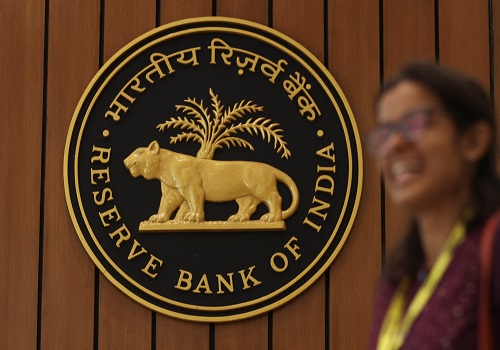RBI Preview : When stagflation strikes : By Geojit Financial Services Ltd

The massive GDP undershoot has meant that the policy trade-offs have become even more acute as the economy looks to be in a stagflationary state. Even as the RBI’s growth/inflation forecast will see significant downward/upward revisions, an immediate rate cut may not be easy for the MPC to justify, especially as their commentary has been assertive on durable disinflation being the primary mandate. Nonetheless, the pressure on convention easing is only going to mount as growth looks structurally pale. The timing and window of cuts is tricky and small amid fluid global dynamics, while the RBI may also want to weigh the FX cost of rate cuts (liquidity implication/sterilization cost, and imported inflation). Non-conventional policy tools like liquidity easing could act as a good balancing act, with a CRR reversal to pre-Covid 4% level, implying an infusion of Rs1.2trn at a time when core liquidity may steadily move to a deficit ahead with unsterilized FX intervention and CIC leakages. We watch for easing regulatory-lending norms ahead to revitalize the waning credit offtake.
How has one growth print changed the macro narrative to a stagflationary one?
Policy tradeoffs have become even more challenging with the emerging cracks in the domestic story. Inflation dynamics have been unfavorable over the last few months, led by perishables in food category and gold, with Q3FY25 likely overshooting RBI’s forecast by ~70-80bps and FY25E likely to see a miss of ~40bps from RBI’s estimate of 4.5%. However, the Q2 growth shocker has meant that the RBI’s optimistic FY25 growth estimate of 7.2% should see a revision of at least 50-60bps (Emkay: 6%). Even as H2FY25 is already seeing sequential pick-up in public spending (more revex than capex), general government budgeted capex will likely be missed by ~0.5% of GDP (estimated BE: 5.4%). We see urban consumption staying pale ahead, led by weaker incomes, with pick up in rural consumption being cyclical in our view. This, in conjunction with other cyclical headwinds like: 1) pressuring corporate margins amid fading terms-of-trade benefits on input costs, 2) tighter lending standards, and 3) weaker exports, have meant that a massive growth undershoot requires a dynamic policy response, especially as inflation remains higher than the 4% durable mandate.
What could hurdle the conventional tool of rate cut response in December?
(1) Even as inflation is likely to ease to sub-5% by end-Mar ’25 (led by easing food), it is far from the 4% durability the RBI has been seeking in order to avoid any feedback loop to generalized inflation. The recent RBI commentary has been assertive on this front, albeit with a presumption that growth is robust. To be fair, some sequential growth gains are visible in pockets, but we are a far cry from a sustained and steady growth picture. The MPC vote split could move to 4-2, as some members turn their focus on the growth undershoot.
(2) The window and timing of massive rate cut(s) is also tricky and small, if we take into account the fluid global dynamics. The US Fed may deliver a shallow cycle amid re-emergence of the risk of ‘high for long’ scenario, with likelihood of rising global-term premium driving higher yields, led by greater macro volatility, persistent inflation plus large fiscal deficits, and higher debt issuances. This restrains the flexibility of EM CBs to solely focus on domestic dynamics.
(3) A rate cut could further put downward pressure on INR, at a time when the RBI is already intervening heavily in spot, forward, and NDF market in the last few months (estimated spot+forward intervention: USD35bn; NDF: ~USD60bn). We are inclined to believe that the policy choice has been to keep INR in the middle of the EM Asia pack, even as there is natural disproportionate pressure on INR vs peers. The RBI may want to weigh the FX cost of rate cuts (liquidity implication and sterilization cost as well as upward pressure on imported inflation) while deciding on their timing.
Are unconventional policy tools like liquidity and regulatory easing an easy bet?
System liquidity has been steadily tightening in Q3FY25, after a comfy Q2FY25. Even adjusting for estimated government surplus, the core deficit has fallen as government spending rose, led by: 1) heavy unsterilized FX intervention (~USD35-40bn), and 2) seasonal CIC leakage (~Rs600-700bn). This trend should continue, with CIC drag in Q4 and possible pressure on FPI outflows, implying deep deficit in system liquidity in Q4FY25, sans RBI’s liquidity infusion. Thus, pre-empted liquidity infusion could lead to better transmission of cuts when the RBI commences the cut cycle. With long-term VRRs turning ineffective, a blunt 50bps CRR cut is a high possibility (leading to ~Rs1.2trn liquidity infusion). We note that CRR is still higher than pre-Covid level and does not even require an MPC vote. We also do not rule out some easing in regulatory lending norms ahead to stimulate the waning credit offtake.
For More Geojit Financial Services Ltd Disclaimer https://www.geojit.com/disclaimer
SEBI Registration Number: INH20000034






















